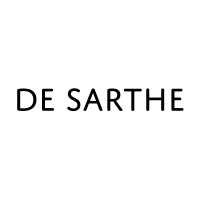South Asia in Italy: “Classical Radical”
By Cleo Roberts-Komireddi

Installation view of "Disruptive Confluences," Palazzo Madama, Turin, 2021. Courtesy Gallery Espace, and Fondazione Torino Musei.
The ruins of a Roman gate were visible under the transparent glass floor in the Palazzo Madama’s low-lit entrance. This ancient relic served as the dramatic platform that introduced “Disruptive Confluences,” one segment of the tripartite show “Classical Radical” also on view at Museo d'Arte Orientale (MAO) and Accademia Albertina di Belle Arti in Turin. Held in conjunction with Artissima art fair’s Hub India and curated by Davide Quadrio and Myna Mukherjee, “Classical Radical” presented over 65 artists from across the Indian subcontinent, with the ambition to create a dialogue between Europe and the region.
Hovering above the Roman remnants was Jayashree Chakravarty’s Route Map of Experience (2003), a standing, three-meter-tall scroll made with Nepali lokta paper and fabric. Forming a spiral maze, the installation invited visitors into its passage and enveloped them in an atemporal environment. Evoking a “sheltering cave,” its earthy surface, scratched, stained, and marked with writing, felt Paleolithic in parts. Route Map led to Manjunath Kamath’s Pukchardara (2018), a colored terracotta sculpture of a human-animal hybrid. Kamath shaved away sections of its body to reveal its hollow internal cavity, ruminating on the relationship between sculptural and architectural forms. Nearby, the unwavering gaze of G. Ravinder Reddy’s Gauri (2017), a glistening bronze sculpture of a giant female head, summoned visitors’ attention with its caricatural goddess eyes, providing a cheeky reinterpretation of India’s traditions of devotion.

Installation view of JAYASHREE CHAKRAVARTY’s Route Map of Experience, 2003, textile, Nepali paper, tissue, brown paper, pigment, acrylic paint, glue, tea, and coffee stain, 320 × 1250 cm and 320 × 442 cm, at "Disruptive Confluences," Palazzo Madama, Turin, 2021. Courtesy the artist, Nadar Museum of Art, and Fondazione Torino Musei.

Installation view of G. RAVINDER REDDY’s Gauri, 2017, bronze, 102 × 63 × 94 cm, edition 7 of 9, at "Disruptive Confluences," Palazzo Madama, Turin, 2021. Courtesy the artist, Emami Art, and Fondazione Torino Musei.
Within the galleries, the 15 other contemporary works on view sympathetically assimilated into the Palazzo’s collections. Winding through its dense sweep of Piedmontese artifacts, contemporary pieces, such as Tayeba Begum Lipi’s razor-blade sculpture Once Upon a Time (2018), felt less like interventions and more complementary to centuries of Italian visual culture. Placed in the room that once belonged to the Madama Reale, which was dressed with ivory bureaus, gilded cornicing, and florid wallpaper, the Bangladeshi artist’s materially provocative, intensely tactile sculpture about the violent experience of being a woman in a heavily patriarchal society sunk into the Italian decadence.
With the visiting pieces understated, the show struggled in its attempt to connect and elucidate the friction between the museum’s collection and South Asia. It would have benefited from further teasing out historic connections between the two regions. The Romans, such as Pliny the Elder, wrote extensively about Ancient India, alongside an abundant spice and silk trade. Later on, language, too, became a point of exchange; from 1861 it was official Italian policy to encourage the uptake of Sanskrit, with the University of Turin inaugurating one of the country’s first chair of this discipline.

PIYALI SADHUKHAN, Silent Tales – Blue I, 2021, glass bangles, Nepali paper, cotton, synthetic adhesive, and acrylic on canvas, 168 × 119 cm. Courtesy the artist, Akar Prakar, and Kiran Nadar Museum of Art Collection.
The exhibition’s episodes at MAO and Accademia Albertina were more insightful and clearer in their messages. MAO’s “Residues and Resonance” focused on the artists’ zestful reinterpretations of South Asia’s elaborate art-making traditions to address issues that occupy the contemporary psyche. Piyali Sadhukhan’s hanging painting Silent Tales – Blue I (2021) disrupted ornamental carpet design with lesions created from shards of broken bangles that follow the sonic wave patterns of women’s screams, highlighting domestic violence. In a room of neo-miniaturists, Priyanka D’Souza explored environmental violence in How to Unromanticise the Anthropocene II-IV (2019), a series of three miniature-style leaves patched with ironed polythene alluding to plastiglomerate, a newly discovered natural rock with plastic content said to be a marker of the Anthropocene.
Though space seemed tight at Accademia Albertina’s “Multitudes and Assemblages,” the piling in of 36 artists was testament to South Asia’s bountiful art world that mystifyingly remains siloed and underrepresented internationally. The most plentiful of the three parts, this iteration sought to “evok[e] more nostalgia than history.” However, the cornucopia of work, from Manish Pushkale’s abstract paintings to LN Tallur’s granite sculpture and Debanjan Roy’s sarcastic reappropriation of Mahatma Gandhi as a matryoshka doll, made it difficult to gauge how this exhibition pushed past the survey show threshold.

PRIYANKA D’SOUZA, How to Unromanticise the Anthropocene II, 2019, gouache, polythene, wall putty, and copper leaf on wasli paper, 45 × 38 cm, set of 3. Courtesy the artist and Latitude 28.
While the curators found elements of continuity across the artists, for example, in their materials and techniques, this should be taken—as they attest—lightly. To find overarching concerns and themes across a geographically, culturally, and linguistically diverse region, especially without considering the diaspora, can be superficial, reductive, and unproductive.
“Classical Radical” is on view at Palazzo Madama, Museo d'Arte Orientale (MAO), and Accademia Albertina di Belle Arti in Turin until February 27, 2022.







